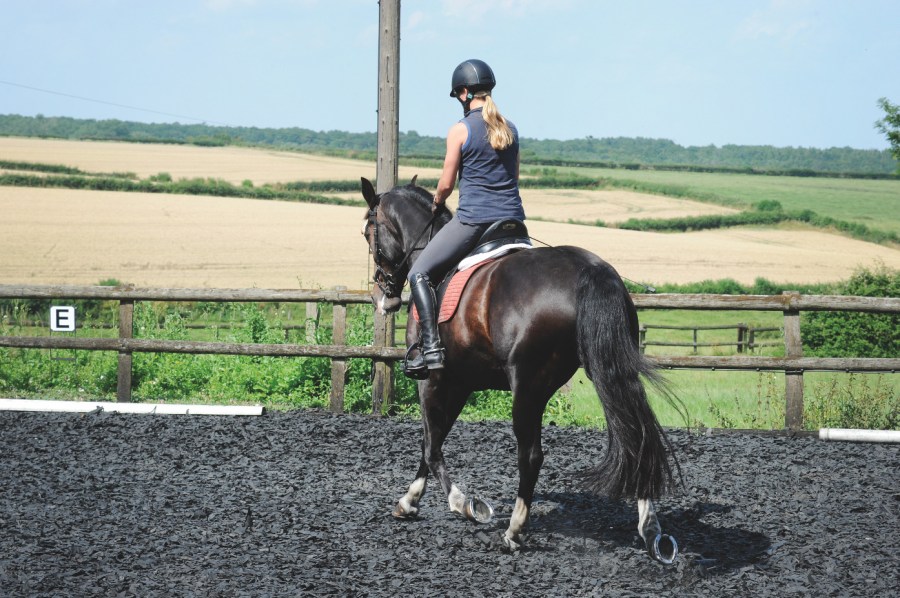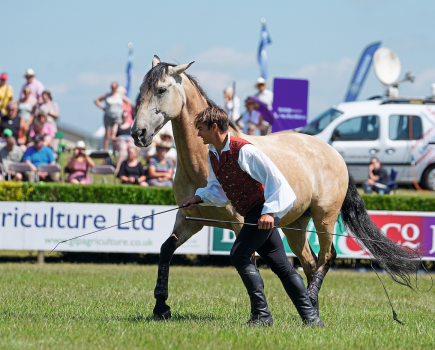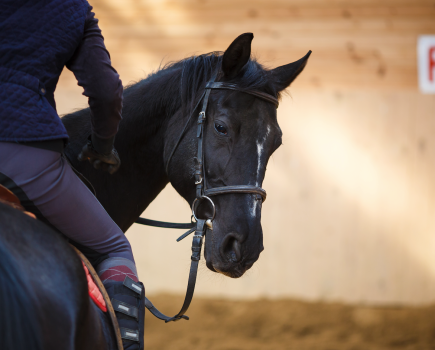When your horse is feeling well, you might expect them to be a bit of a handful. It’s all fun and games to have them excitable for a gallop on a hack, but not so good when you’re aiming for that perfect score at a competition.
It can be frustrating riding a hot horse when you’re trying to focus, but getting angry at them won’t calm them down any quicker. If there’s one person who knows how to manage horses that are full of energy, it’s Olympic event rider Sam Griffiths.
“A horse’s natural reaction is often to flee from stressful situations,” he says. “Hot horses are generally tense and they won’t listen to you.
“You need to do a lot of calming work at home and eventually they’ll relax with you. You can then try the same exercises when you’re out competing to help them regain focus using something familiar.”
Exercise 1: Calm them down
If you have a whizzy warm-up, you can say goodbye to any chance of a calm schooling session.
“The key is to get them to relax,” says Sam. “If you can calm them in your warm-up, they’ll be more likely to listen to you for the rest of your training session.”
Once you’ve had a walk around for a few minutes, try the following exercise:
How to ride it
- Go large around your arena in trot.
- Ride around until your horse settles into an even rhythm.
- Give the rein, encouraging them to stretch their neck.
- Change the rein and repeat.
- After five minutes of trotting, do the same in canter.
- Change the rein and repeat.
Exercise 2: Help them focus
After a quiet warm-up, the next step is to get your horse focusing on your aids.
“Riding shoulder-in in a slightly longer frame keeps them relaxed but gets them to think,” says Sam. “You have to use your inside leg, which encourages your horse to accept you as a rider. You’ll also need to be able to bend their neck — doing this encourages them to relax and focus on you.
“Even if you’re inexperienced, give it a try,” adds Sam. “It’s a good way to get them to accept your leg.”
Shoulder-in brings their shoulders in off the track while their quarters stay where they are.
How to ride it
- Go large in trot, maintaining an even rhythm.
- Keep your horse in a slightly longer frame.
- Down one side of your arena, ask for shoulder-in.
- Your inside rein creates flexion and controls the angle of the shoulder-in, while your outside rein controls the pace.
- Use your outside leg to keep their hindquarters straight and your inside leg to keep them moving.
- Ride for a few paces and then go straight, riding large around the arena.
- Change the rein and repeat.
Exercise 3: Boost your connection
Once you have the hang of the shoulder-in in trot, you can take things up a gear and try shoulder-fore in canter.
“This is a more advanced move and how well you do it comes down to horsemanship,” says Sam. “It’s a good one to practise because your horse has to really listen to what you’re asking for.”
Shoulder-fore is roughly about half the angle of shoulder-in, but doing it in canter makes it harder.
How to ride it
- Go large around the school in an even canter.
- Down the long side of the arena, put a little more weight into your inside leg. Keep your outside leg on the girth to control their quarters.
- Keep your horse soft through their neck and ask for a small amount of inside flexion.
- Keep your shoulders in line with your horse’s.
- After a few steps, straighten up and continue to canter around the arena.
- Change the rein and repeat.









